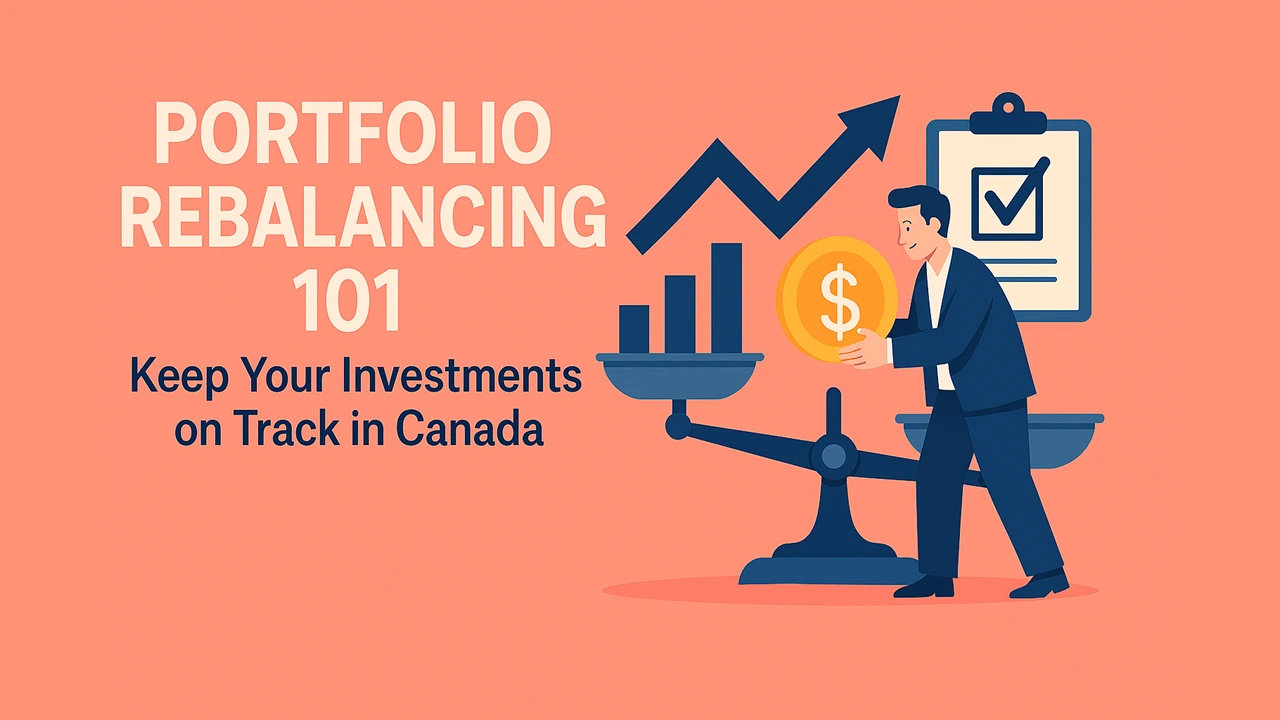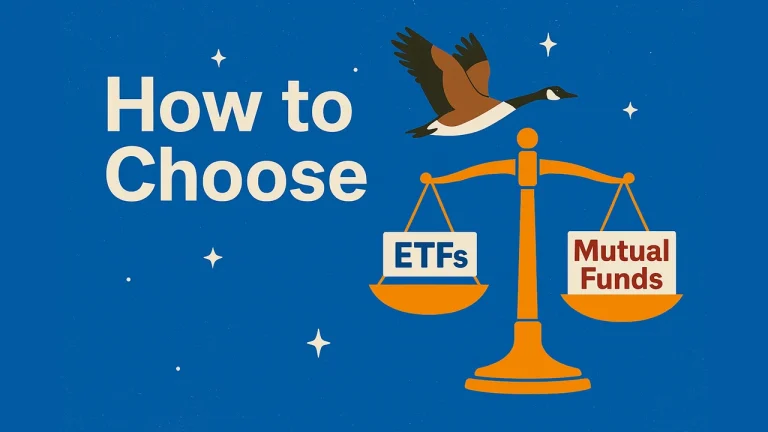Portfolio Rebalancing 101: Keep Your Investments on Track in Canada

Your investment portfolio might look balanced today — but it won’t stay that way for long. As markets rise and fall, your mix of stocks and bonds can drift, quietly increasing your risk without you noticing.
Portfolio rebalancing helps you stay in control, keep your risk level steady, and protect your long-term goals — without needing to watch the market daily.
In this guide, you’ll learn what portfolio rebalancing is, why it matters for Canadian investors growing their wealth, and how to do it easily, even with a busy schedule.
What is Portfolio Rebalancing?
Your portfolio doesn’t stay balanced on its own. As markets rise and fall, your asset mix shifts, no matter if you’re invested in mutual funds or ETFs — sometimes in ways that can quietly increase your risk. Portfolio rebalancing is how you bring things back in line with your original plan.
Why Your Portfolio Drifts Over Time
When certain assets (like stocks) grow faster than others (like bonds), they take up a larger portion of your portfolio. Left alone, this can change your risk level without you realizing it.
What rebalancing Actually Means
Rebalancing means selling some of the assets that have grown too large and buying more of what’s lagging — bringing your portfolio back to its original target.
Pro Tip
You don’t need to sell often. Many investors rebalance just once or twice per year.
The Role of Target Allocation
Your “target allocation” is the mix of investments you choose based on your goals and risk tolerance — like 80% stocks and 20% bonds.
Pro Tip
Younger investors often choose higher stock allocations for long-term growth, while those nearing retirement reduce risk by adding bonds.
Why Portfolio Rebalancing Matter for Canadians
Rebalancing isn’t just a nice-to-have — it’s a key part of staying on track toward your financial goals. For Canadians, the benefits are even greater thanks to our unique account structures and tax advantages.
Unchecked Drift Increases Risk
When your portfolio becomes unbalanced, you may be taking on more risk than you intended — especially during a market surge.
For example, if stocks rally, your portfolio could become overly aggressive just before a downturn.
Canadian Accounts Make Rebalancing Easier
TFSAs and RRSPs allow you to rebalance without triggering capital gains taxes — a big advantage over non-registered accounts.
Plus, many robo-advisors like Wealthsimple and Questwealth offer automatic rebalancing in these accounts.
Pro Tip
Prioritize rebalancing inside registered accounts to avoid unnecessary taxes.
Avoid Emotional, Mistimed Moves
Rebalancing helps you stick to your strategy instead of reacting emotionally to market highs or lows.
It’s a built-in discipline tool that encourages you to buy low, sell high — automatically. It adds structure to your investing and protects you from yourself, so you don’t have to rely on emotion or guesswork.
Pro Tip
Pre-schedule your rebalancing (e.g., every 6 or 12 months) so you’re not tempted to make knee-jerk changes.
How Portfolio Rebalancing Works (Step-by-Step)
Rebalancing might sound technical, but it’s actually simple once you know the process. Whether you’re doing it manually or through a robo-advisor, the goal is the same: keep your investments aligned with your original plan.
Step 1: Check Your Current Allocation
Start by looking at how your investments are currently split — stocks, bonds, cash, etc. Most brokerages and robo-advisors show your asset mix on your dashboard.
Step 2: Adjust back to Target
To rebalance, sell some of the overweight assets (the ones that have grown too large) and buy more of the underweight ones to return to your target mix.
Pro Tip
You can also rebalance with new contributions — just direct more money toward the lagging asset class instead of selling.
Choose a Rebalancing Schedule That Works For You
There are two popular approaches:
- Time-based: Rebalance on a fixed schedule (e.g. every 6 or 12 months)
- Threshold-based: Rebalance only when an asset class drifts by a certain % (e.g. more than 5%)
Consistency beats complexity. Pick one rebalancing method and stick to it. This keeps your plan simple and stress-free.
Pros, Cons, and Common Mistakes to Avoid
Rebalancing keeps your portfolio healthy — but like anything in investing, it’s most effective when done correctly. Here’s what to know before you dive in.
Benefits of Rebalancing
- Manages risk: Keeps your asset mix aligned with your comfort level and timeline
- Encourages discipline: Forces you to buy low and sell high
- Reduces emotion: Adds structure to help you stay focused during market swings
Downsides and Trade-Offs
- May trigger capital gains in non-registered accounts
- Takes effort if you’re investing manually without automation
- Can lead to overtrading if done too often or emotionally
Common Mistakes to Avoid
- Rebalancing too often: You don’t need to react to every small drift
- Ignoring allocation for years: Big drifts = unexpected risk
- Selling without considering tax impact or fees
Pro Tip
Use automation where possible, and set a reminder to rebalance once or twice per year — then leave it alone.
Conclusion
Investing success comes from simple, consistent actions — portfolio rebalancing is one of the easiest and most effective.
- 🎯 Know your target allocation (e.g., 80% stocks, 20% bonds) and use it as your guide.
- ⏰ Rebalance once or twice a year, or when your portfolio drifts 5–10% from your targets.
- 💼 Use tax-advantaged accounts like TFSAs and RRSPs to avoid unnecessary taxes when rebalancing.
- 🤖 Consider robo-advisors for automatic, hassle-free rebalancing.
- ⚠️ Avoid common pitfalls like overtrading, ignoring tax implications, or skipping rebalancing altogether.
- 💡 Use new contributions strategically to help rebalance without triggering sales.
Stay consistent and patient — small adjustments today keep your investments aligned and working toward your long-term goals.

